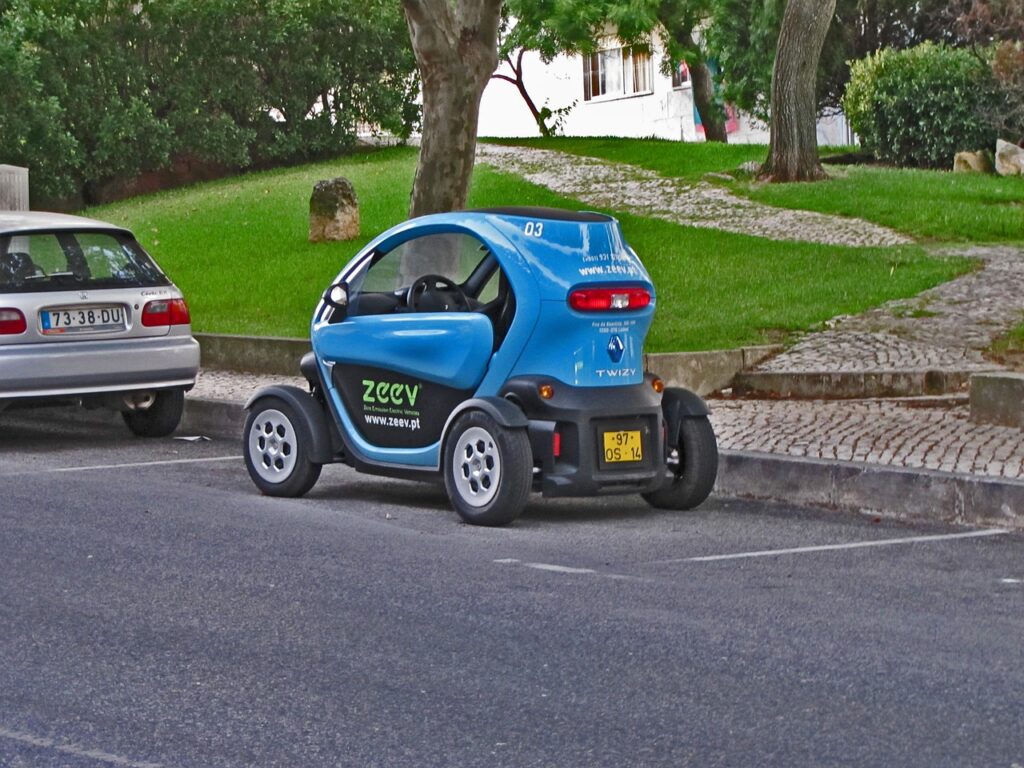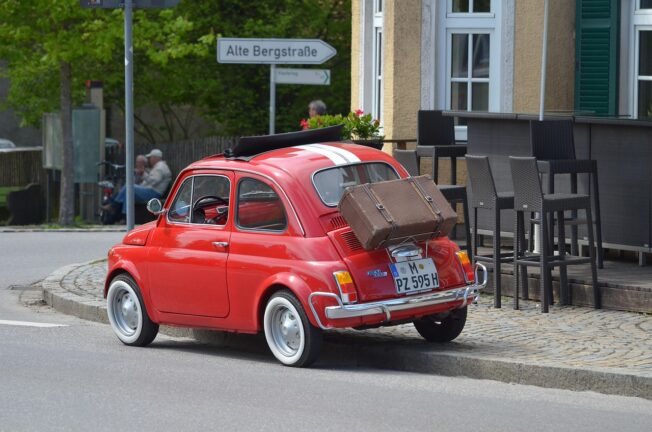In her 2025 State of the Union, Ursula von der Leyen pitched a bold vision: a new class of small, affordable electric cars designed for Europe’s cities—efficient, electric, and European-made—to take on the flood of cheap Chinese EVs. But the big questions remain: Who will build it? Who will buy it? And can Europe really compete?
Having advised Škoda, Porsche, Toyota, and other major automakers on strategy, digitalisation, and cost reduction, Petr Knap—EY’s automotive expert for Central & Eastern Europe—unpacks the promise and pitfalls of the EU’s €15,000 EV plan for EU Perspectives.

Back to the Future
Do you think there’s room for a revival of small, affordable cars in Europe?
It seems they’ve largely disappeared from the market, likely due to supply issues. But I still believe that there are consumers in many cities and countries who value small or micro vehicles. There’s also a question of the target price—something just under €15,000—that would make the segment very attractive. That is virtually non-existent at that price point in Europe right now. Stellantis and Renault have shown some interest, and this connects back to when CEO Luca de Meo was still at Renault. He spoke about a sort of European “Airbus” initiative — a joint effort to produce a European car to compete with Chinese manufacturers. He made the point at the Geneva Auto Show in 2024.
Small cars used to be huge in Europe, around half the market in the 1980s; today, reports say small cars account for some five per cent of the market.
There was definitely a time when small cars dominated. These days, many households in Europe have two cars—one for the city, errands, short commutes. For example, in Czechia the average driver travels 35 kilometres a day. That’s very common in other urban areas as well, so a compact, cheap, and electric car fits perfectly. With such short daily ranges, you could easily charge it just once a week. I’d say the main driver for them to return would be economics and practicality.
Japanese inspiration
An obvious question is what will they jettison to keep the price down, keep the weight down, as well as small battery size—EU regulations would have to change for this so-called e-segment car. Could they relax expensive safety features for city use?
I think that’s at the core of what Ursula von der Leyen was hinting at in the State of the EU speech. I haven’t studied the proposal in detail—and there hasn’t been much detail since it was first announced as far as I know—but the idea seems to take inspiration from Japanese Kei cars. They’re small, inexpensive, and regulated differently. The EU may be looking to support manufacturers by relaxing some of the over-sophistication that’s now or would become standard—things like alcohol detection systems or advanced braking sensors.
All these extra safety and convenience systems make cars more complex and expensive. My understanding is that the Commission wants to allow some of that complexity to be scaled back in this specific category of car. But again, I say this cautiously, because the full proposal still isn’t out—we’ll have to wait until specific details are confirmed.
You might be interested
How to keep down the sticker price
To really affect price, this car would likely need to be in its own category—maybe with restricted highway use, or without Advanced Driver Assistance Systems (ADAS) and pedestrian recognition. Possibly speed-limited. That’s how you could justify relaxing certain safety requirements. But this would be new territory for Europe, which is known for strict safety and environmental standards.
There are consumers in many cities and countries who value small or micro vehicles. If it was something just under €15,000? That would make the segment very attractive. – Petr Knap, EY’s automotive expert for Central & Eastern Europe

The implementation struck me as a big question mark. If we are talking about a brand new design, it’s a new vehicle? Who would build it?
We still don’t know how it would actually be done. In today’s highly competitive and high-cost environment in Europe, I think it’s unlikely unless the EU plays a larger role than currently suggested. As I understand it, the Commission is essentially offering: “We’ll relax some regulations so you can try to build something cheaper.” That’s it. If I oversimplify, that’s the deal.
A joint “Airbus-style” project seems unlikely to me, especially since people like Luca de Meo—who was one of the champions of that idea—are no longer in the same roles. Stellantis, for instance, is quite a complex, multinational entity already facing challenges on both sides of the Atlantic.
Margins in this segment would be razor-thin. Maybe they could create a joint battery sourcing venture for economies of scale. But a single, shared model? I don’t see that happening.
Back to the drawing board
So the most effective approach would be a brand-new design from scratch by individual manufacturers: designed for specific national markets along the same design principles.
Yes. The most successful EVs tend to be built from the ground up with electric architecture in mind—taking advantage of not needing a combustion engine, optimising space and structure, and so on. Some manufacturers still prefer flexible chassis platforms that can take different powertrains, for cost reasons. But if you want to hit a truly low price point, I think a unique, bespoke design is essential. In its own category.
If you just modify a Peugeot 108 or 208, for example, you risk diluting the value proposition and confusing customers, because this new car would be fundamentally different. It would need to be marketed differently, too.
Stepping back, it’s a moonshot. Many things would have to go right. After all, the Commission can only control so much of the equation for success. – Petr Knap, EY’s automotive expert for Central & Eastern Europe

Will it come in many colours?
So the affordable European car could follow certain shared design parameters, but be produced and branded by whichever manufacturer chose to take it on.
Exactly. One model that could work in a country like Czechia, for the central European market, is something like the former TPCA project in Kolin, east of Prague—where Toyota, Peugeot, and Citroën previously all shared the same car platform and factory, but sold differently branded vehicles. It’s now just Toyota, but that original structure could be revived: similar vehicles with shared back-end and engineering, but marketed independently.
What about the fact the new car would be entering a market that’s already being overtaken by Chinese EVs? What kind of timeline is even realistic?
The timeline is critical. We don’t know what stage individual manufacturers are at with their internal development, but in any case, this can’t be a six-to-seven-year project like in the past. It has to happen within two to three years-max. China can bring a new model to market in 10–12 months. Europe needs to move much faster than before.
If Chinese manufacturers see this as a viable segment—and they will—they’ll move in very quickly. They already have cost advantages and a steep learning curve. So we have to anticipate that.
Igniting excitement
From a design and marketing perspective, the discussion, or the way the EC President von der Leyen pitched the idea of a new affordable small car made me think fondly about iconic small cars of the past—the Mini, the Renault 5, the F…
The Fiat 500 (laughs).
… absolutely. These were adored as well as the Beetle, tied to the zeitgeist, marketed or elevated even further through advertising or hit movies like The Italian Job. Could this car capture imaginations that way?
I think that would help. But stepping back, it’s a moonshot. Many things would have to go right. After all, the Commission can only control so much of the equation for success. If it works, it would be fantastic. But given Europe’s track record with ambitious industrial projects, you’d be cautious. We don’t control the battery supply chain. We don’t have the cost structures across the value chain. Our markets are fragmented—27 different countries needing to align on what qualifies as this new class of car.
So yes, the story and design would have to capture people’s imagination. But success would also depend on where it’s sold. A stylish, Italian-feeling design might do well in Rome—but maybe not in Copenhagen or Athens. Europe is very diverse. At EY, we often talk about the “Four Europes” when analysing the EV uptake: the Nordics (ahead), Germany and France (in the middle), Southern Europe (behind), and Central/Eastern Europe (further behind still). Each region has its own pricing expectations and attitudes. These would all play a role.

There was definitely a time when small cars dominated. These days, many households in Europe have two cars—one for the city, errands, short commutes. – Petr Knap, EY’s automotive expert for Central & Eastern Europe
Once something like this becomes elevated in a State of the Union speech, doesn’t it raise greater political stakes? If it fails, it adds to that tired perception of Europe overpromising and underdelivering.
Yes, absolutely. That kind of cynicism can spiral. It becomes yet another example of Europe talking big but failing to follow through. We’ve seen that with Mario Draghi’s report and other initiatives. Not enough follow-up action. If nothing materialises, the risk is real. It fuels frustration, both internally and externally.
Sudden impact
How important is the implantation of this new class of car to have a real environmental impact? As opposed to a political and symbolic move?
I think it’s partially a political response to pressure from the auto industry. OEMs – Original Equipment Manufacturers have been saying: “You want 100% BEVs by 2035, but you’re not helping us get there.” Projections currently suggest we’ll only be at 65–70 per cent by 2035 unless there’s significant money invested or stricter industrial combustion engine (ICE) bans. The Commission can’t just tell manufacturers, “Make it happen,” and walk away. They need to offer tools to help.
This proposed category might be one such tool—a way to open the market to more affordable EVs, particularly for city use. It’s an acknowledgment that without some regulatory flexibility or support, the targets simply aren’t achievable. And look, realistically, even China hasn’t committed to 100% battery electric vehicles (BEVs) by 2035. China is nearing 60 per cent for new energy vehicles, and BEVs alone are almost 30 per cent of the market. But even they aren’t promising to go all-electric by 2035. It’s hard to get to 100 per cent. You know it from other fields as well—getting something to 90 per cent is tough. But that last 10 per cent? That takes often the same effort as the first 90.
The three Es: But can Europe guarantee all three?
When it comes to this “three E-car” as von der Leyen presented it (environmental, economical, European), we’ll have to wait and see what actually emerges.
I’d love to see the industry take proactive action rather than just offer welcoming remarks—an actual plan to move forward. But for now, everyone seems to be waiting on the details.
There’s some cynicism, especially after the initial Euro 7 proposal. I had firsthand experience with MEP Alexandr Vondra (ECR/CZE), who was the rapporteur. The proposal was very strict but eventually got watered down. I even moderated discussions in the European Parliament at the time. Initially, the Commission presented largely empty tables missing critical details in some cases—like allowed concentration levels of pollutants—that still haven’t been clarified, even now, years later.
Details matter. Whether you’re tech-minded or a political scientist, you have to accept some physical laws apply. You can’t hit your targets without knowing the exact numbers.
Back to the E-car: relaxing some restrictions might save €20, but others could save €4,000 in costs. Without clear definitions, how can anyone really know?










